Matt Cook, GoPro's 'Human Drone,' helps X Games coverage take flight

When Bobby Brown flew down the slopestyle course on Aspen’s Buttermilk Mountain, launching one 1260 rotation after another, spectators around the world could follow his every move as if they were skiing right beside him.
They can thank Matt Cook in part for the view.
Cook, a production artist for GoPro, has manned one of follow cameras at the Winter X Games for the past five years with a flair for the kinetic visual that has earned him the nickname the Human Drone. He also organizes, films, and edits footage of GoPro team riders on their various trips, such as snowboarder Travis Rice’s excursion in April into the backcountry of British Columbia.
There was a time when Cook thought that he would be the one celebrating a flawless run or starring in ski movies. He started skiing at Lake Tahoe, Calif., when he was four years old, then joined the Alpine Meadows freestyle team when he was eight.
He didn’t need to look far for inspiration. Cook traveled across the country and competed with an elite group, including David Wise, who went onto win the Gold Medal in Ski-Halfpipe at the 2014 Sochi Olympics.
Training Day: Chloe Kim on the slopes ahead of X Games Aspen
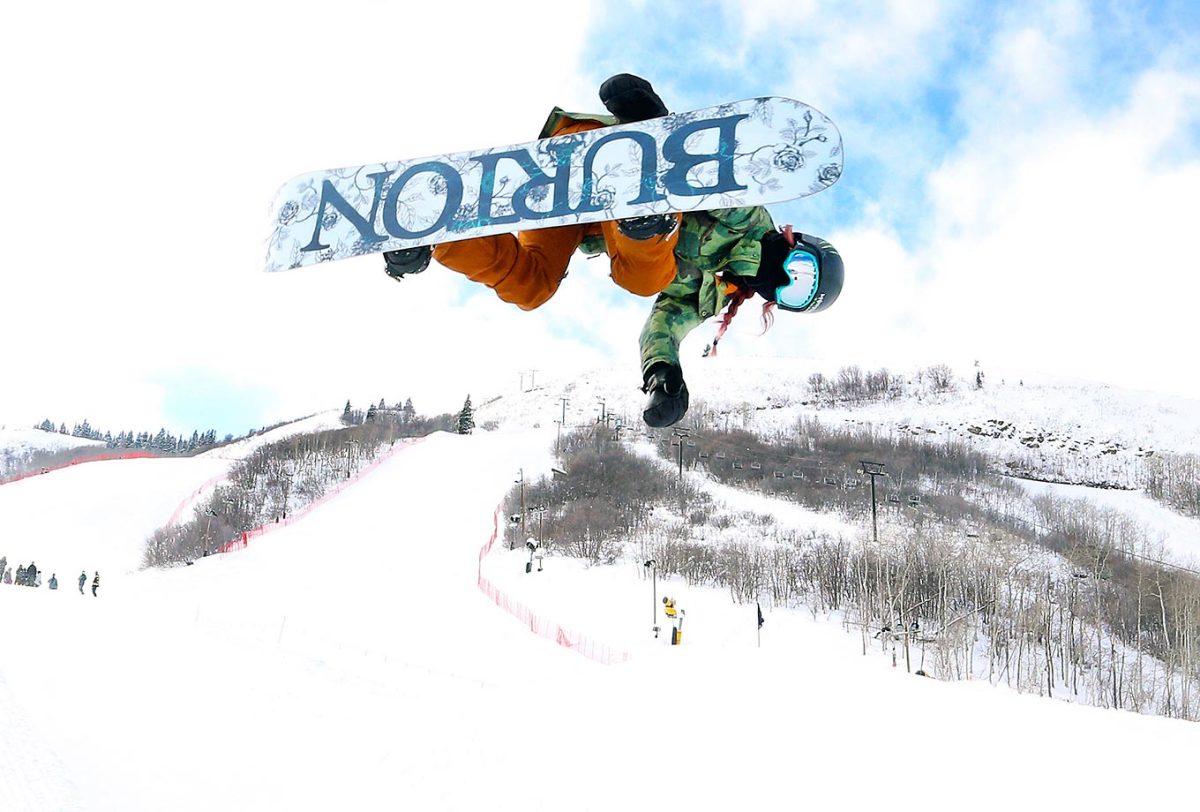
Teenage snowboarding phenom Chloe Kim of La Palma, Calif., gets some air during her practice training sessions on the halfpipe at the Park City Ski Resort in Utah.
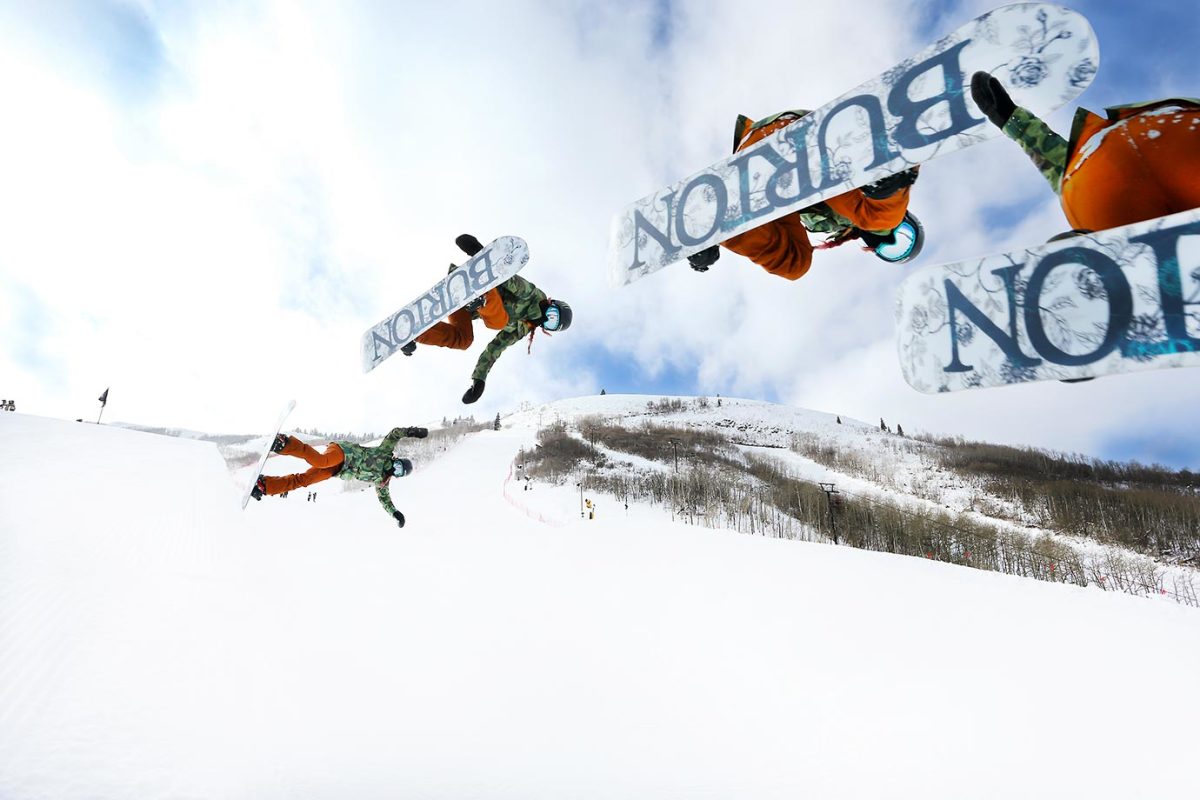
Teenage snowboarding phenom Chloe Kim of La Palma, Calif., gets some air during her practice training sessions on the halfpipe at the Park City Ski Resort in Utah.
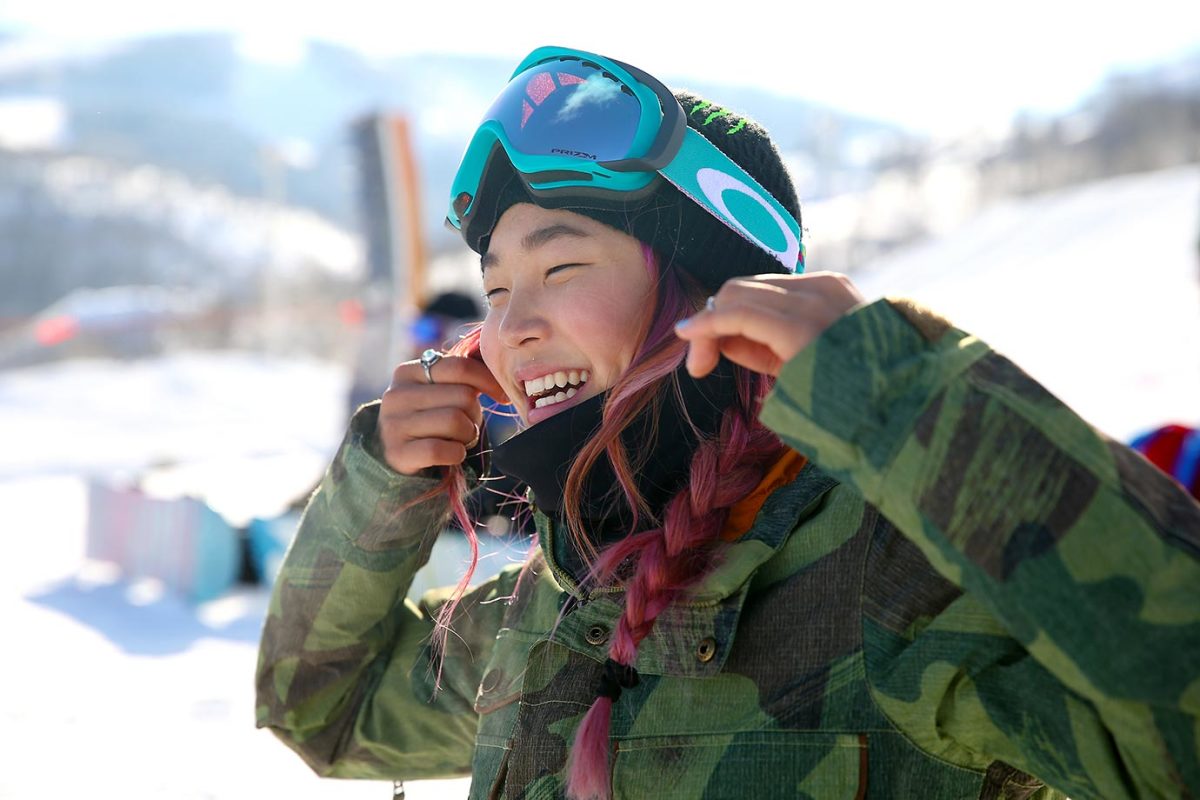
After a hard day of practice runs on the half pipe on top of the mountain.
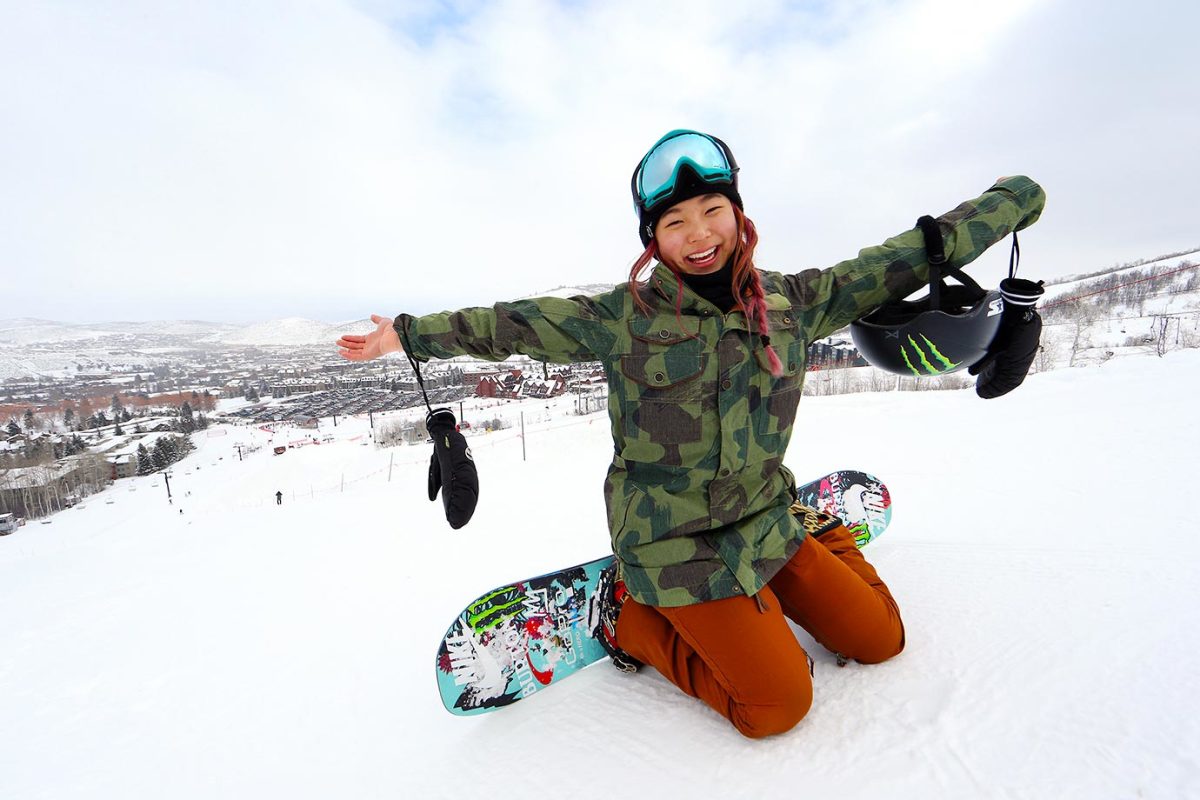
15-year-old snowboarding phenom Chloe Kim has a contagious smile and passion for her sport.
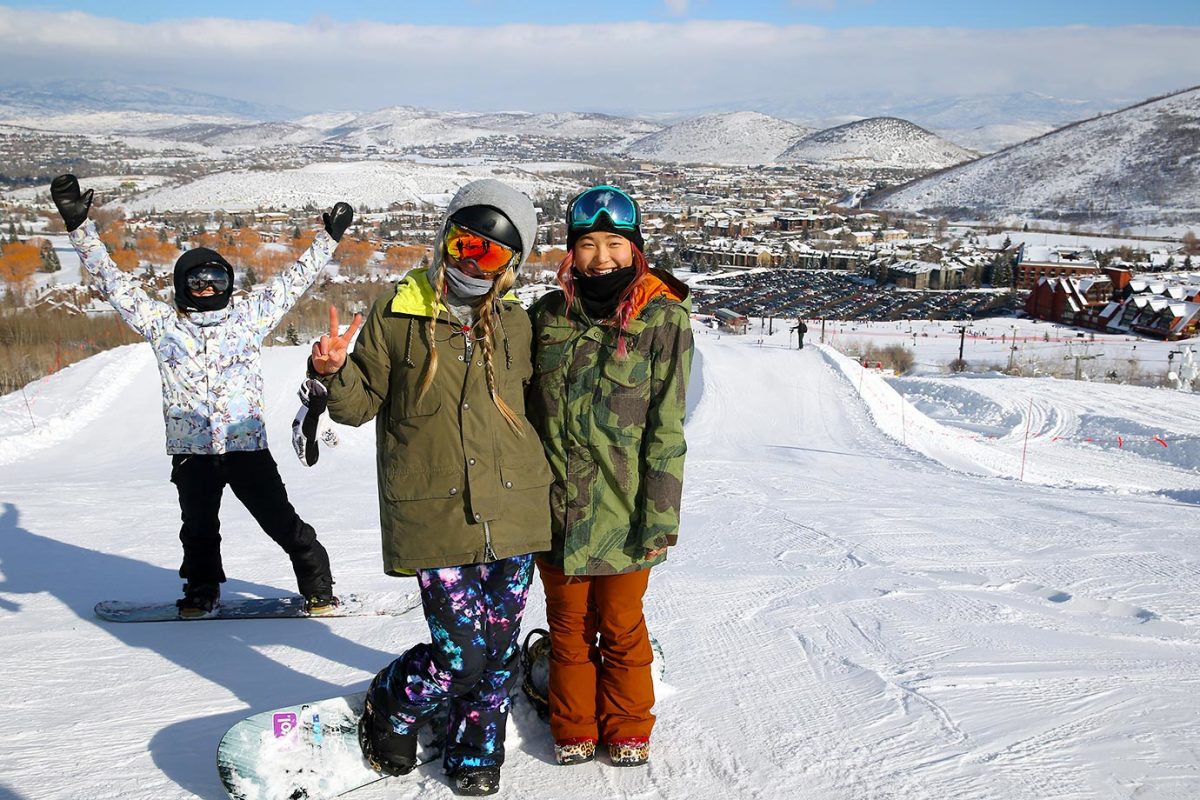
Snowboarder Chloe Kim, far right, poses for a photo with fellow snowboarder (and Olympic champion ) Hannah Teter (middle ) as three time Olympic medalist Kelly Clark (in background ) photo bombs the moment in between practice runs at Park City Resort in Park City.
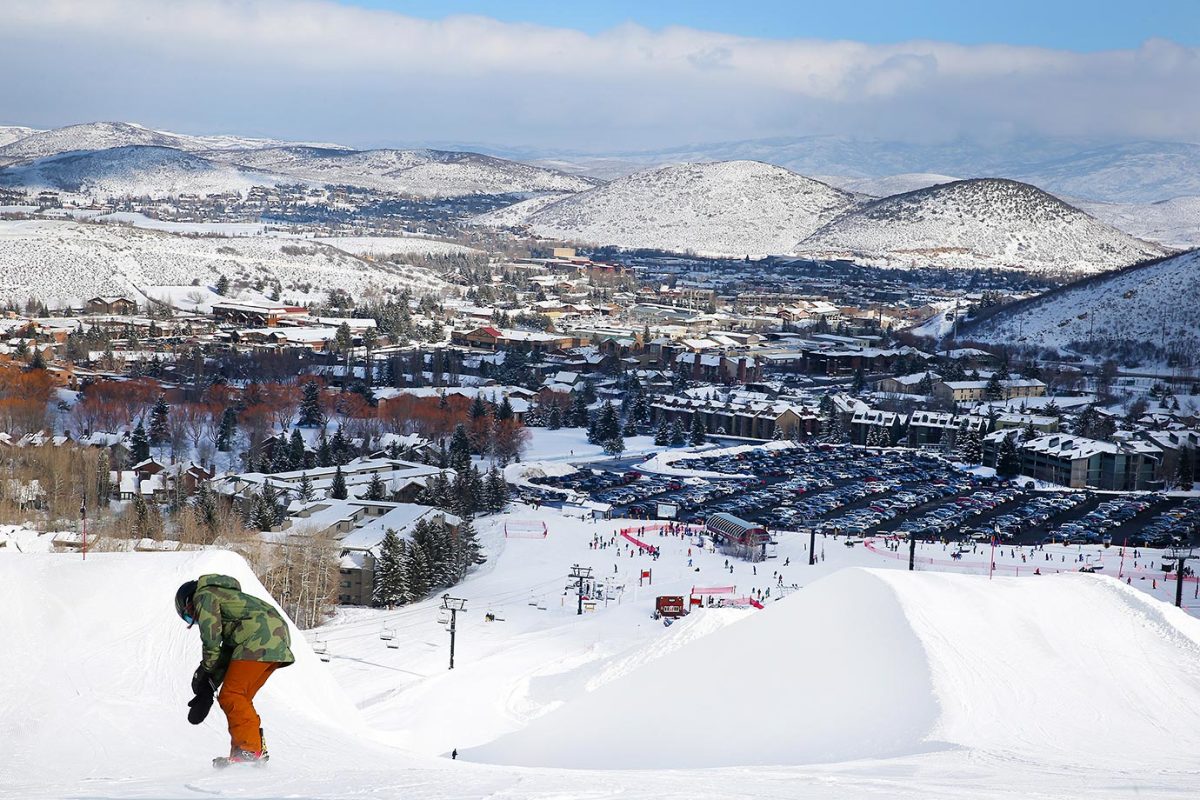
With Park City and the mountains of Utah in the background, snowboarder Chloe Kim drops down towards the half pipe at Park City.
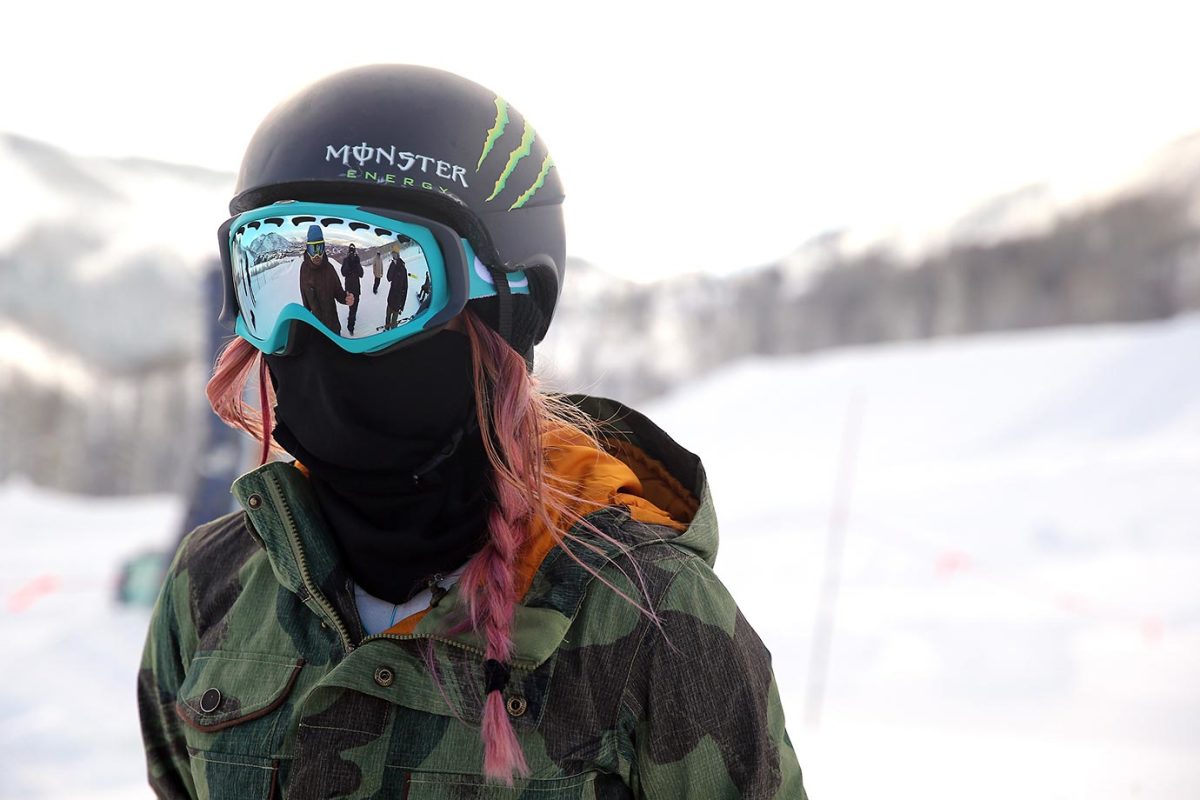
Chloe Kim listens to her US Olympic coaches during practice at Park City.
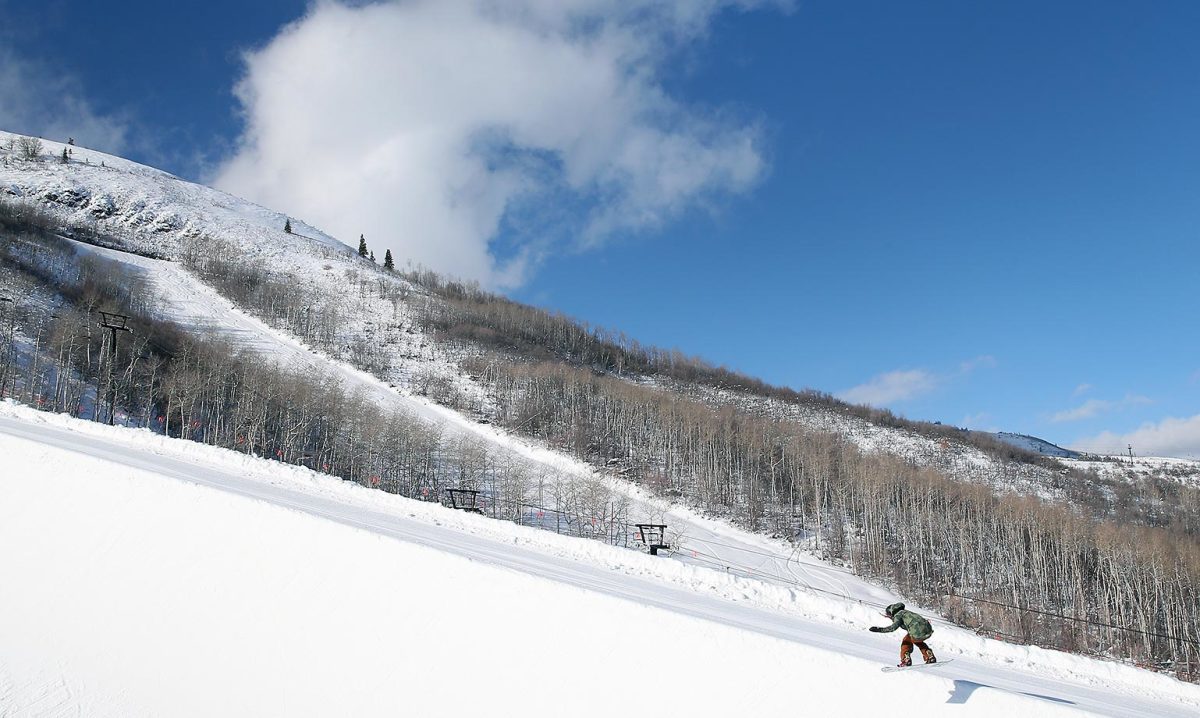
Chloe Kim drops down into the half pipe during snowboarding practice at Park City.
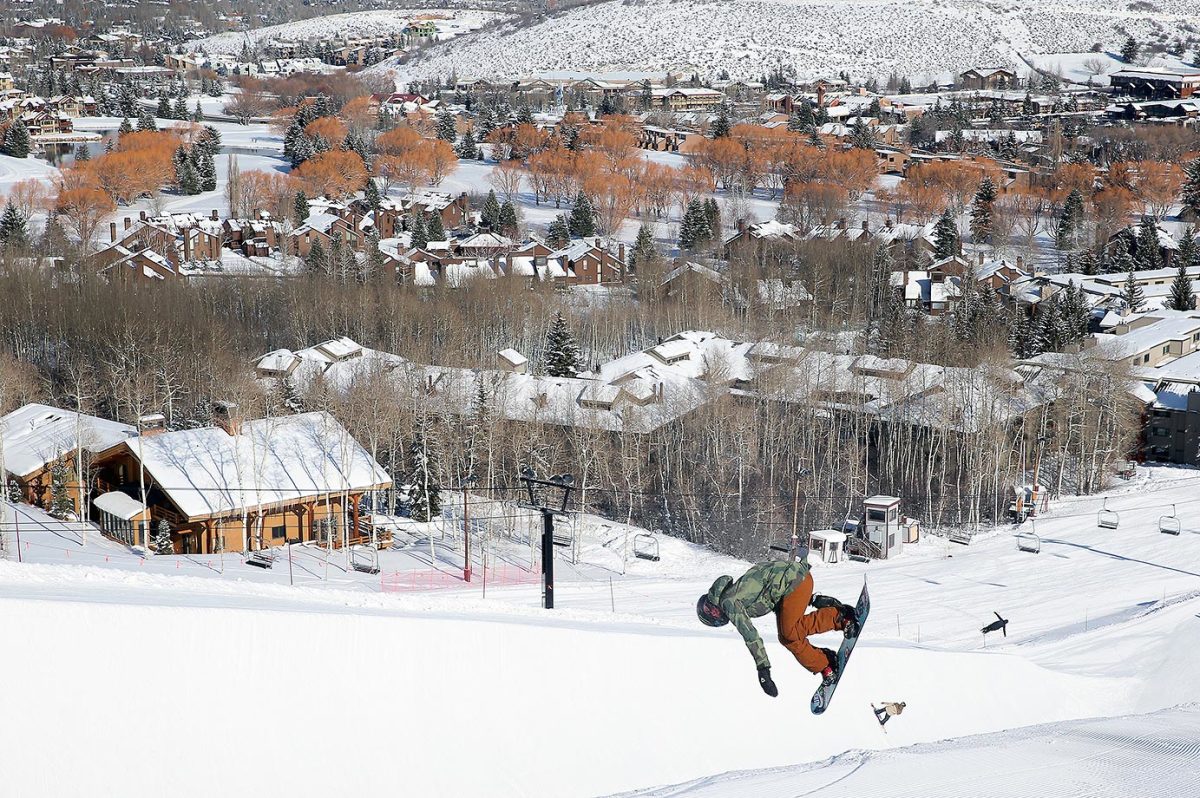
Chloe Kim drops into the half pipe at Park City Resort.
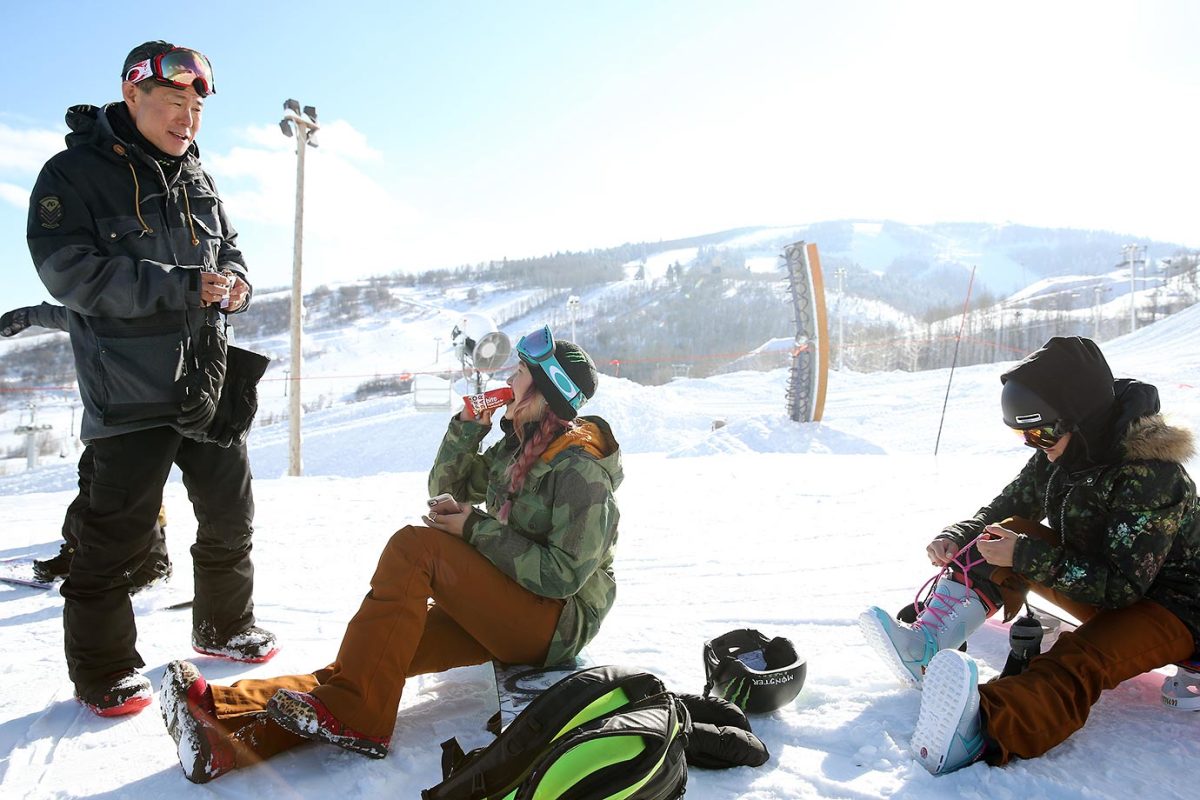
Chloe Kim grabs a snack and talks with her father Jong Jim Kim on top of the mountain.
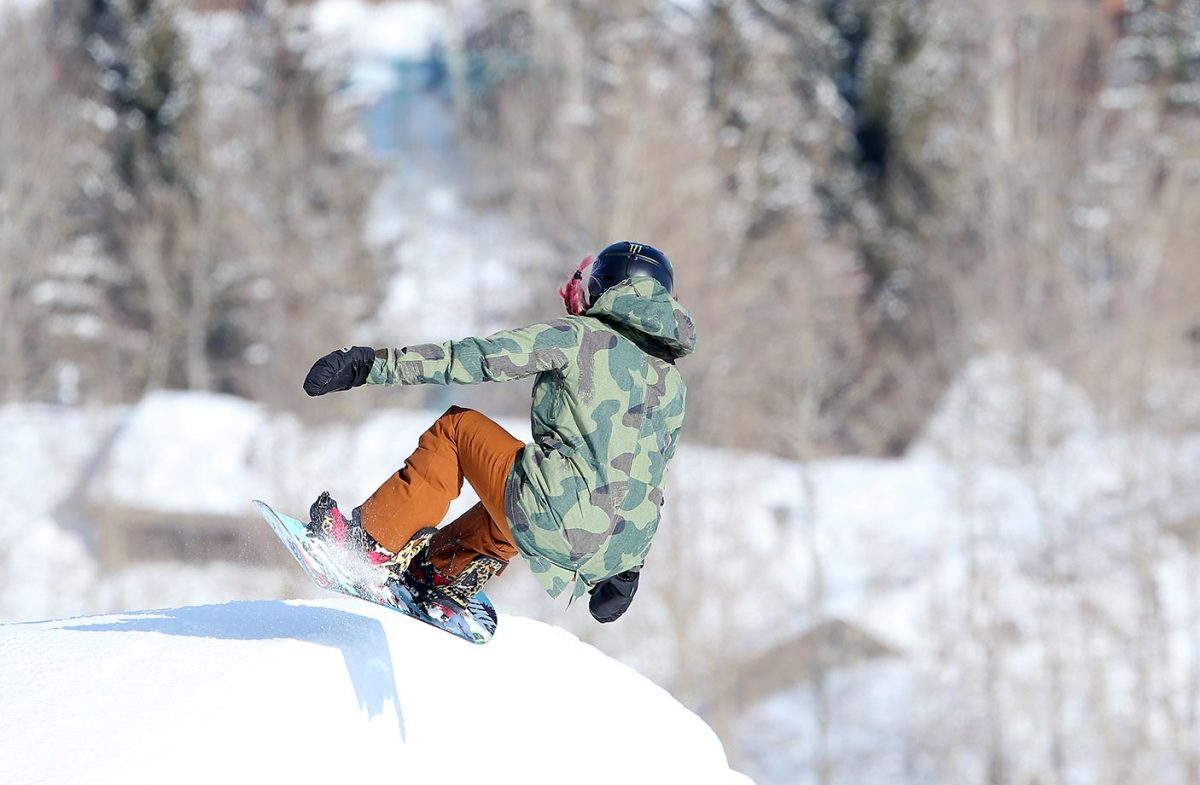
Snowboarder Chloe Kim will be a fan favorite at the upcoming 2016 Winter X Games in Aspen.
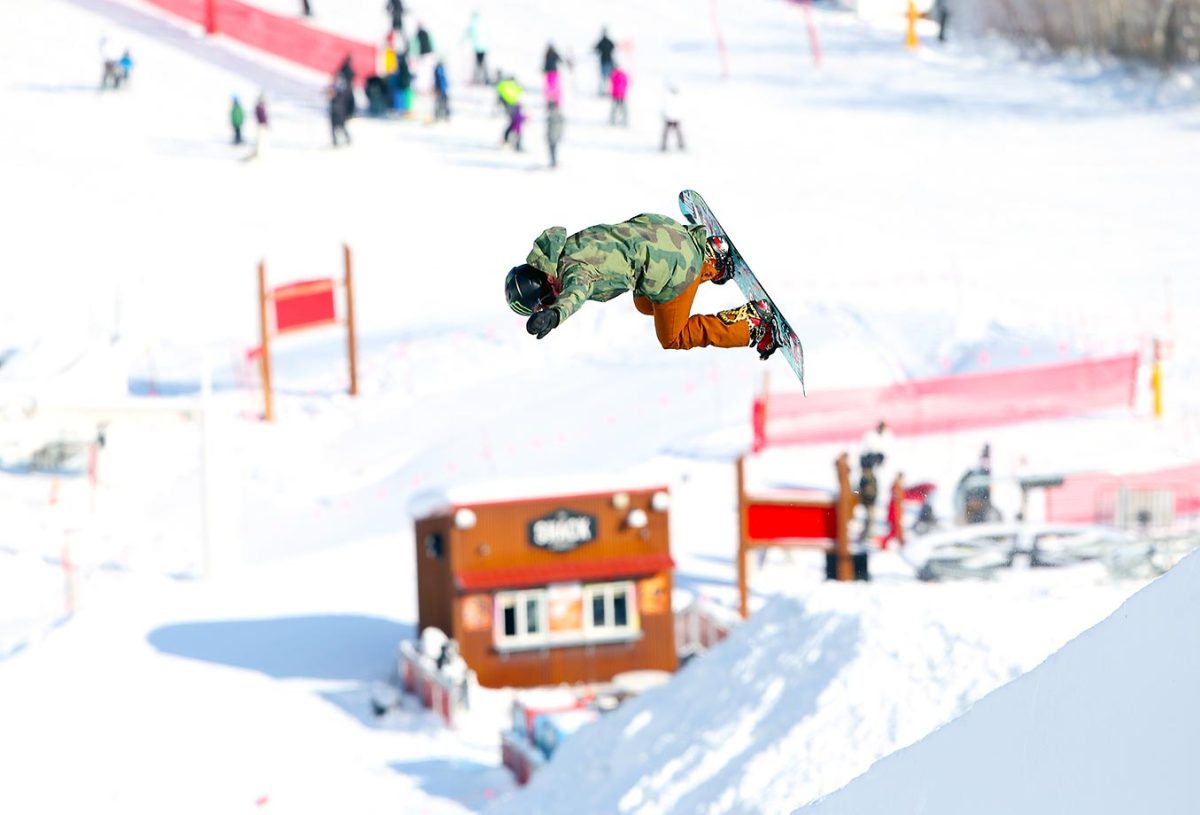
Snowboarder Chloe Kim is nonstop action during practice runs at Park City.
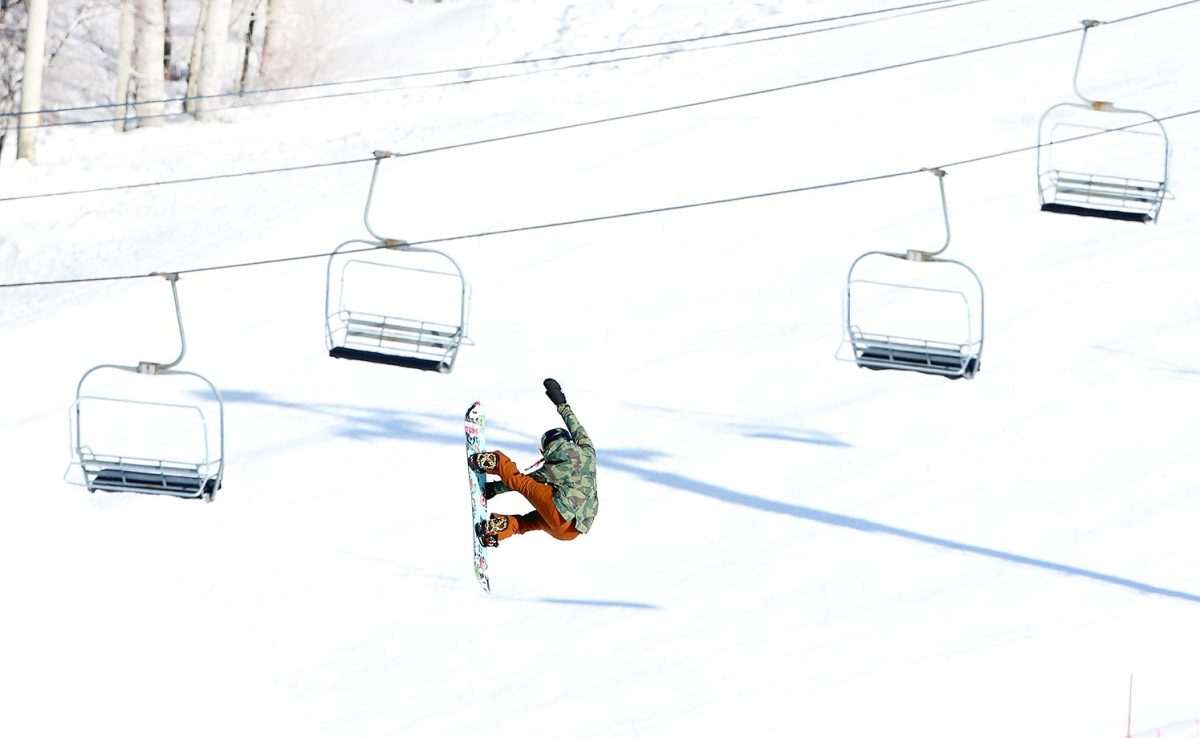
Chloe Kim gets airborne during snowboarding practice.
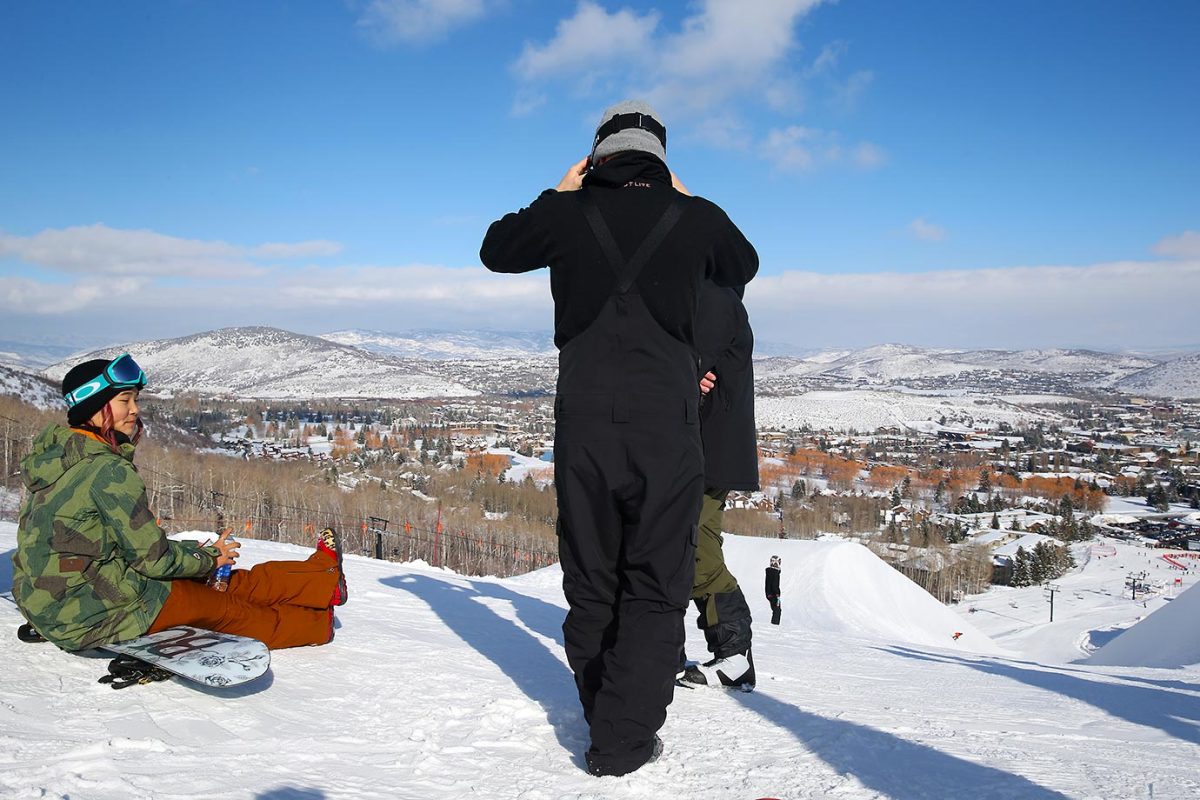
Chloe Kim takes a break on top of the mountain in Park City.
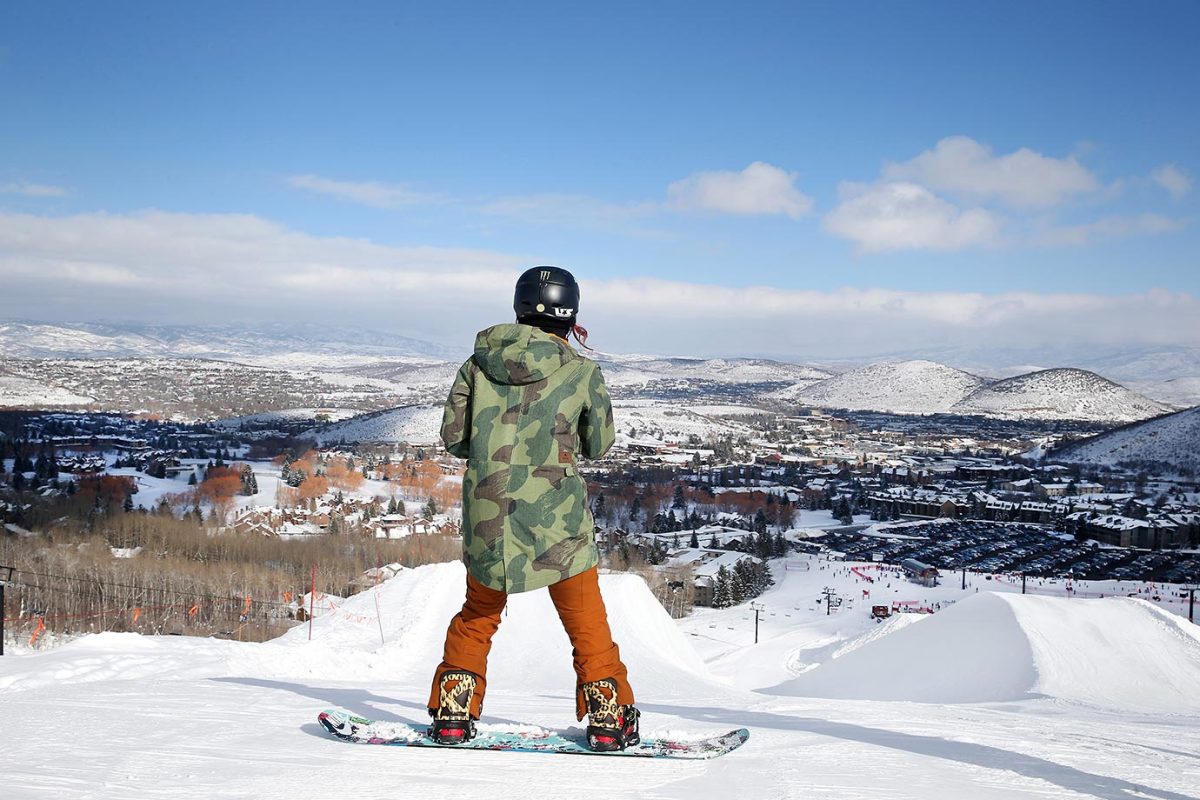
Snowboarder Chloe Kim surveys the mountain and the half pipe at Park City.
“Pretty much up all of the guys that I grew up riding with are still competing and killing it,” Cook says.
Yet, each time Cook entered a contest, he struggled to match his peers. “It just wasn’t working out,” he says. “I would pretty much always fall during competition runs.”
After realizing that he wasn’t going pro, Cook enrolled at the University of Southern California in 2009 and majored in kinesiology.
Still, he was never far from the slopes. He spent most weekends from November to May traveling with USC’s ski and snowboard club to Mammoth Mountain. Cook even won the collegiate national championship in ski halfpipe and helped the Trojans claim the team title in March of 2010.
His big break, though, came the next winter when he received a call from Abe Kislevitz, a friend and mentor of his at USC, who graduated in 2011 and landed a job at GoPro in media production.
Nick Woodman, 40, got the idea for GoPro after a surf trip with his friends to Australia in 2002. Woodman developed the initial prototypes of the wearable, waterproof and rugged cameras to help surfers capture footage of themselves—previously a two-person operation.
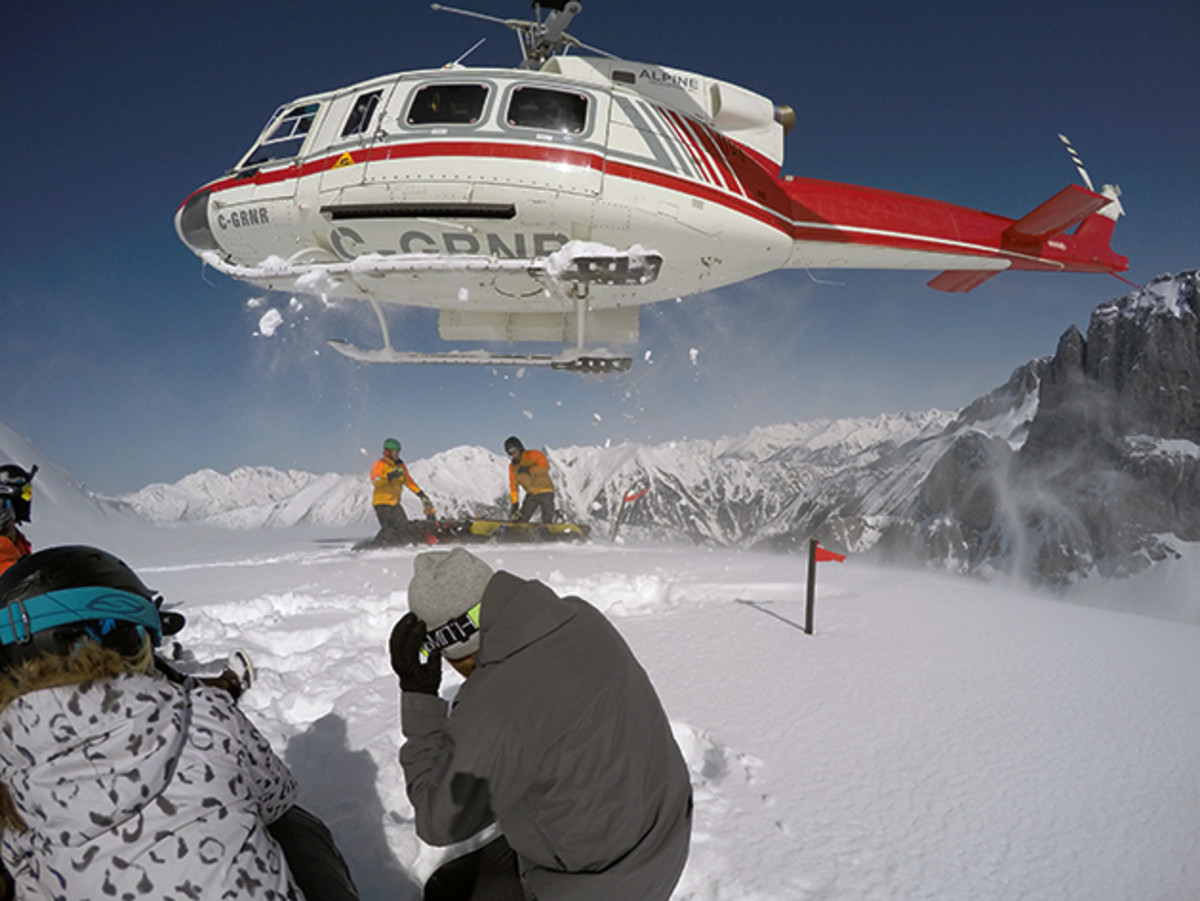
The idea caught on.
The cameras have been used to take video inside the barrel of massive waves at Teahupoo, flying through a cave that’s less than seven feet wide, and even a 24-mile jump from space.
And the GoPro has come a long way since Woodman released the first iteration, the GoPro 35mm Hero, in September 2004 at an action sports trade show in San Diego. Woodman traveled and sold the first cameras out of a 1971 Volkswagen Bus that he’d nicknamed The Biscuit.
Now when Woodman travels, say for a surf trip to Mexico, he prefers a private jet.
Woodman has even been dubbed “surfing’s first billionaire” by Surfer magazine. GoPro went public in June of 2014.
The Weekender: GoPro's best of 2015, surfing wipeouts, Jackson Hole, more
But before that, the company planned its first-ever coverage of the Winter X Games in 2011.
While Cook had no formal filming experience, Kislevitz noticed that he always brought a camera with him on USC’s ski trips, then spent hours editing the footage to make short films.
Kislevitz asked if Cook wanted to go to Aspen. He did. The kid who dreamed of competing at the X Games found a new path down the mountain.
He would follow instead of lead.
“All I knew was that I really wanted to work at GoPro,” Cook says. “I wanted to be a part of this amazing lifestyle where I could continue to ski and travel the world.”
He has achieved that goal. Cook’s gig at the X Games eventually turned into a full-time job. Although Cook lives in his Ford E-150 conversion van—complete with a kitchen—his abode is more a result of choice than necessity.
“It’s sick,” Cook says of the house on wheels that allows him bring everything he needs from GoPro’s headquarters in San Mateo to Tahoe at a moment’s notice.
But Cook’s work has taken him much further than California. Cook’s passport, now dotted with stamps from such skiing destinations as Laax, Switzerland, is evidence that he has reached the summit of the action sports industry with GoPro.
Further proof came last January. Cook was integral in providing GoPro’s expanded HeroCast coverage at the Winter X Games. This innovation offered viewers live in-air follow camera angles during competition runs. Previously, all of the GoPro footage for ESPN’s broadcast was prerecorded during practice by Cook as well as fellow cameraman and USC ski team alum Caleb Farro.
To blend into the background, Cook approaches the course in the same way as the athletes he trails. He scouts each rail and jump. He takes several practice runs with a GoPro affixed to a ski pole, which he says now feels like an extension of his arm.
And while the skiers and snowboarders launch themselves off each feature and attempt a dizzying array of flips and spins, Cook has a different objective: stay smooth, stay steady, and most of all, stay out of the athlete’s way.
Breaking down the pro ski, snowboard 2015-16 season: A hot winter ahead
“The last thing you want to do is ask an athlete where they are going on the course right before they drop in,” Cook says.
Such considerations represent a unique progression in the world of action filmmaking.
With HeroCast, filmers like Cook and Farro now have to keep pace with their subjects—following them off each jump.
“GoPros have completely changed the game,” Travis Rice says.
“With POV [Point-Of-View] camera angles and options, filmers need to be athletes themselves and athletes are becoming much more film aware,” Cook says.
The coordination between the two is an intricate choreography at breakneck speeds.
“The cameraman needs to be able to anticipate where the subject is going to go, how fast they are going and then have the ability to react when it doesn’t go according to plan,” Rice says. “Which is most of the time.”
One of those mishaps occurred when Cook was filming Bobby Brown in Switzerland. Another happened during Sage Kostenburg’s second qualifying run at the 2015 X Games.
Cook knew every one of Kostenburg’s moves and maintained the balance between staying close but not too close. But then he approached the “Money Booter”—the final, 80-foot jump.
“I went way, way too big,” Cook says.
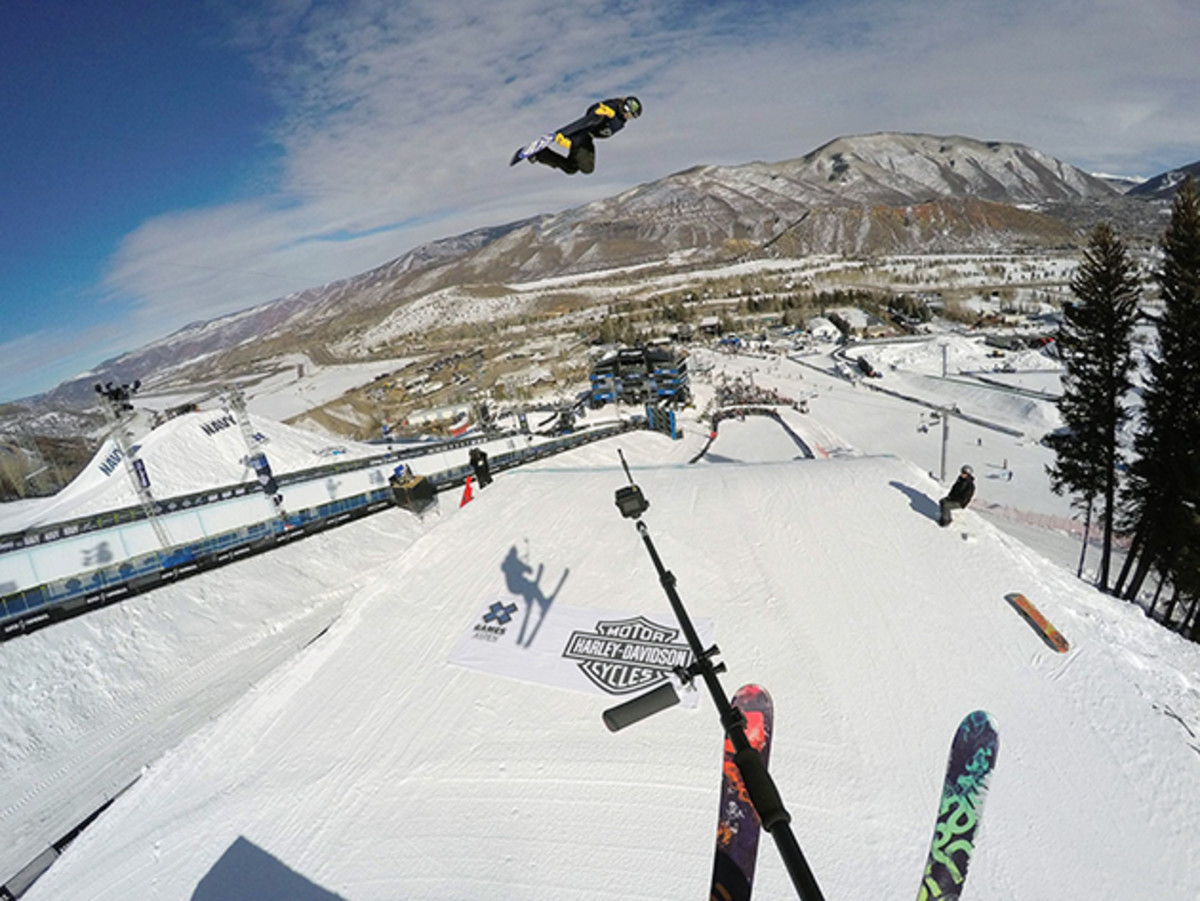
Since he was so focused on Kostenburg, Cook failed to spot his landing. He crashed and “ate crap.” GoPro batteries sprayed like shrapnel. Once Cook collected his equipment—and his pride—he rode back to the top of the course. The show had to go on.
“The process is not always seamless,” Cook says with a laugh.
But when all the variables do come together, when the rider and filmer are in sync and execute a flawless run—as Cook and Rice eventually did in British Columbia—Cook says the “moment of stoke” comes close to winning the gold.
“You are not looking at the camera while you’re filming, so once you get to the bottom of the mountain, the moment of anticipation is like opening a present,” he says. “Sometimes I’m shaking because I’m so nervous, but when you get the shot it’s all worth it.”
- MORE EDGE: North Korea hosts the world's elite snowboarders
So although Cook has changed his goal from standing atop the dais after a contest to capturing the perfect clip, he likes his current vantage point just fine.
“Working with the GoPro athletes, I am very appreciative that I am not under the same pressure and spotlight,” he says about his place behind the lens. “I’m exactly where I want to be.”
